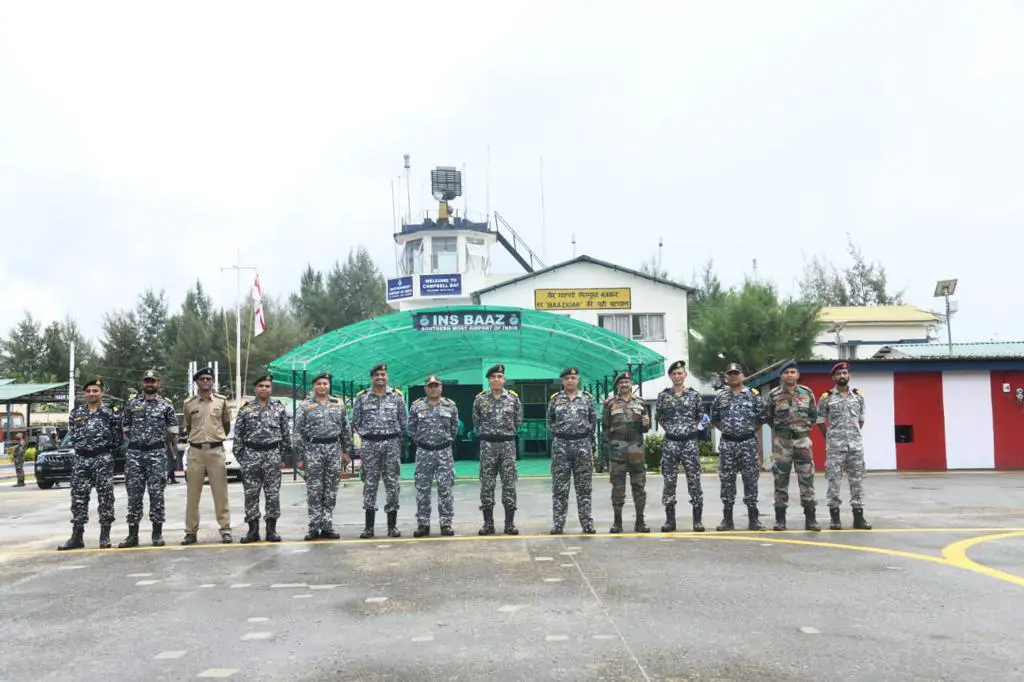On Friday, the 21st Raising Day of the Andaman and Nicobar Command was celebrated.
All about the Command
Created back in 2001, the Andaman and Nicobar Command (ANC) based at Port Blair, is the first and only tri-service theatre command of the Indian Armed Forces which was made with the objective of safeguarding India’s strategic interests in Southeast Asia.
The major reason behind setting up the Andaman and Nicobar Command is because, through these islands, India is able to defend its vital stakes in the Indian Ocean Region.
Naval ships sent on deployment to East Asia and the Pacific Ocean are provided with administrative and logistical support by the command.
A three-star officer from the Navy commands the ANC, under whom officers and men from all the three forces (Navy, Air Force, Army) work. Along with that, Bi-annual coordinated patrols are conducted by the ANC along with the navies of Thailand and Indonesia while the annual SIMBEX maritime exercise is conducted with Singapore and the biennial Milan multilateral naval exercise.
In order to suppress gun running, narcotics smuggling, piracy, and poaching, India’s exclusive economic zone (EEZ) is patrolled by the ANC and maritime surveillance, humanitarian assistance and disaster relief (HADR) are also conducted by them.

Importance of the Islands
The Andaman and Nicobar Islands (A&N) fall on the maritime boundary of definitions of the Bay of Bengal and the Andaman Sea. As per several official reports, around one third of the littoral states of the world along with one-Fourth of the total world population is located around the Indian Ocean Region (IOR) and huge volumes of the world’s trade, specifically oil and gas pass through this route.
Several reports state that it is due to the presence of islands in the Indian Ocean that India became an active part of various maritime regional groupings.
Major trade route
The majority of the trade from the South China Sea and Pacific to the Indian Ocean passes through the ten degree channel (that separates the Andaman Islands and the Nicobar Islands from each other in the Bay of Bengal) that lies between North and South Nicobar Islands while on the other hand, Malacca strait is considered to be the busiest and most important chokepoint and all the trade vessels from Malacca Strait are bound to pass through Six Degree Channel south of Andaman and Nicobar Islands.
That said, India’s ability to exert influence over the vulnerability and protection of this maritime trade route gets enhanced as all the three major global sea trade routes to the Indian Ocean converge at the narrow Six Degree Channel in Indian EEZ thereby resulting in high shipping density.
Earlier developments
A unified Fortress Andaman and Nicobar (FORTAN) was established by the Indian security establishment back in the 1960s as a response to the increased security threats.
In the year 1990, under the command of the Fortress Commander, a battalion subsequently the 108 Mountain Brigade was initially placed by the Indian Army while in 1993, 37 Wing of the Indian Air Force was raised at AFS Car Nicobar
After the Kargil war in 1999, in order to control the assets of the tri-services and the Coast Guard on the islands, the replacement of the FORTAN, under the Indian Navy, with a Joint Andaman and Nicobar Command was recommended by the Group of Ministers (GoM) report on Reforming the National Security System and finally, the Andaman and Nicobar Command was in place by the end of September 2001.
War Exercises
In order to check the readiness and ensure the functional integrity of all three services on the islands, an amphibious exercise called ‘Jal Prahar’ was conducted by the command in 2016. Another exercise to practice the defence of the island chain and recapturing islands was during 20–24 November 2017, called as the Defence of Andaman & Nicobar Islands Exercise (DANX-17).
Assets of the Command
Along with the INS Saryu, INS Sumedha and two Saryu-class patrol vessels based at Port Blair since 2013, on 6 April 2016 INS Karmuk and INS Kulish on 21 December 2017 were re-based to Port Blair from Eastern Naval Command.
The Sukhoi Su-30MKI fighters are decided to be stationed by the Indian Air Force on the islands along with increasing the number of operational airfields, while under the naval component, four Bangaram-class patrol vessels, two Car Nicobar-class patrol vessels, one Trinkat-class patrol vessel, three Kumbhir-class tank landing ships, one Shardul-class tank landing ship, eight Mk. IV LCUs and the SDB Mk.3 large patrol craft were deployed in addition.
On the other hand, the Air Defense Wing fielding a squadron of S-75 Dvina Long-Range SAMs and a squadron of S-125 Neva/Pechora Medium-range SAMs is also maintained by the Indian Air Force.
As per reports, before 2022, the number of naval vessels based in the island chain will increase to 32 while the Japanese war bunkers constructed during World War II, will also be revived to bolster security.
